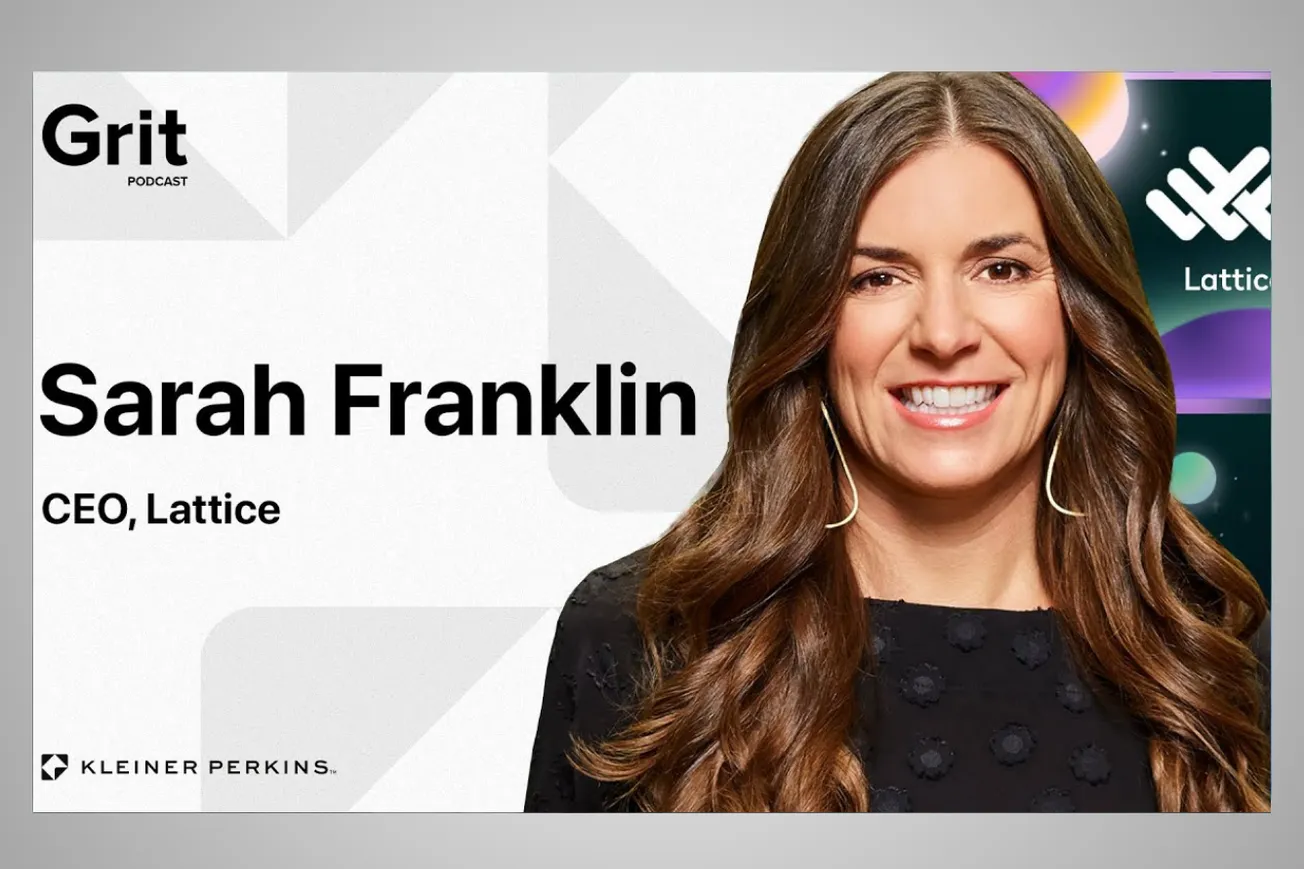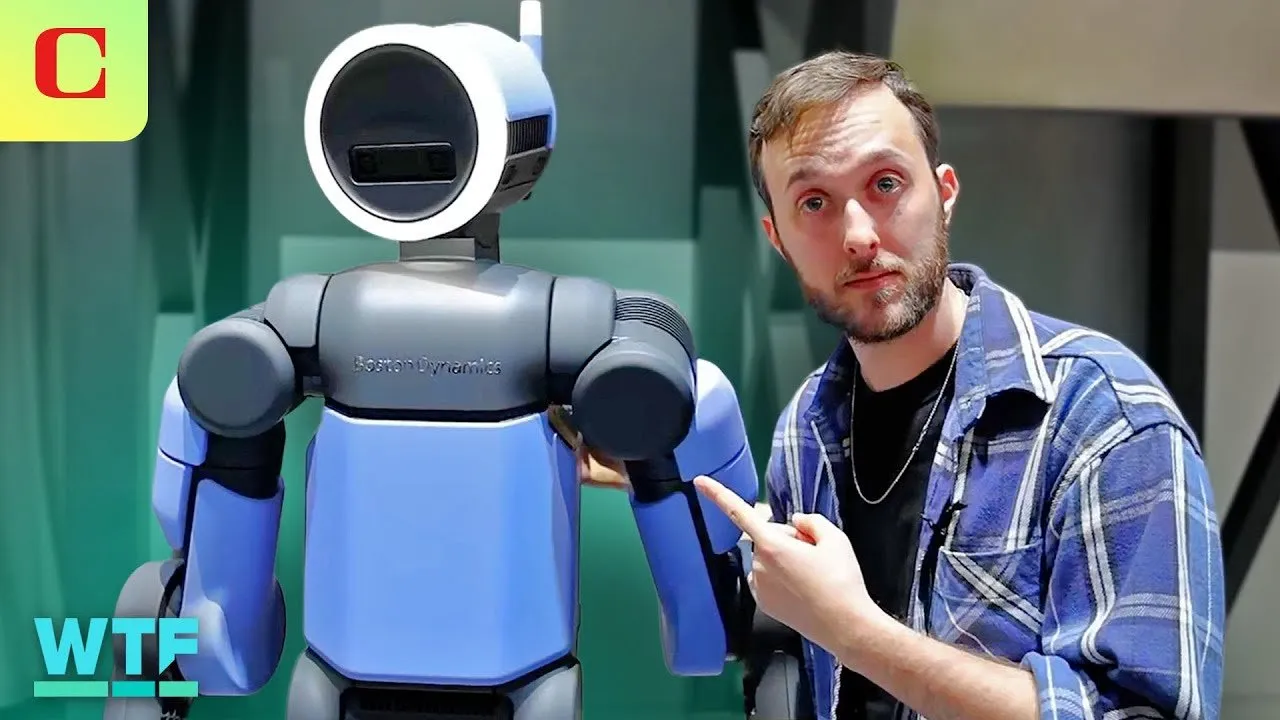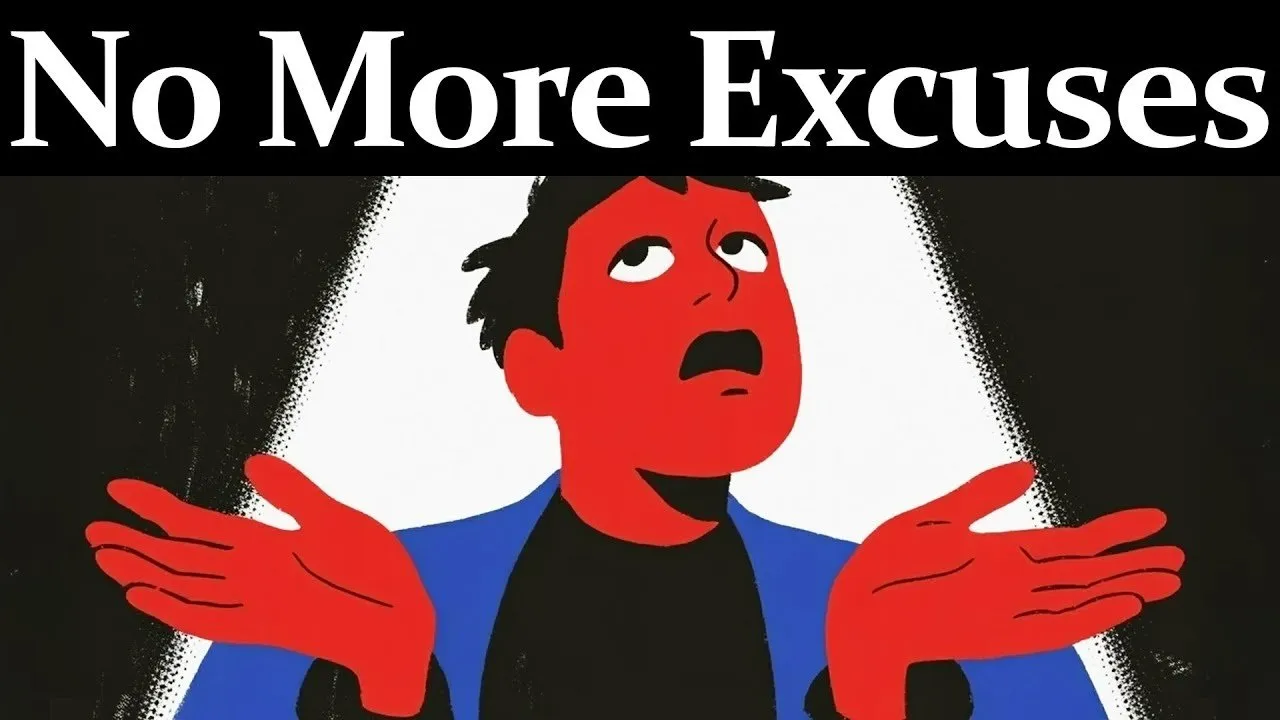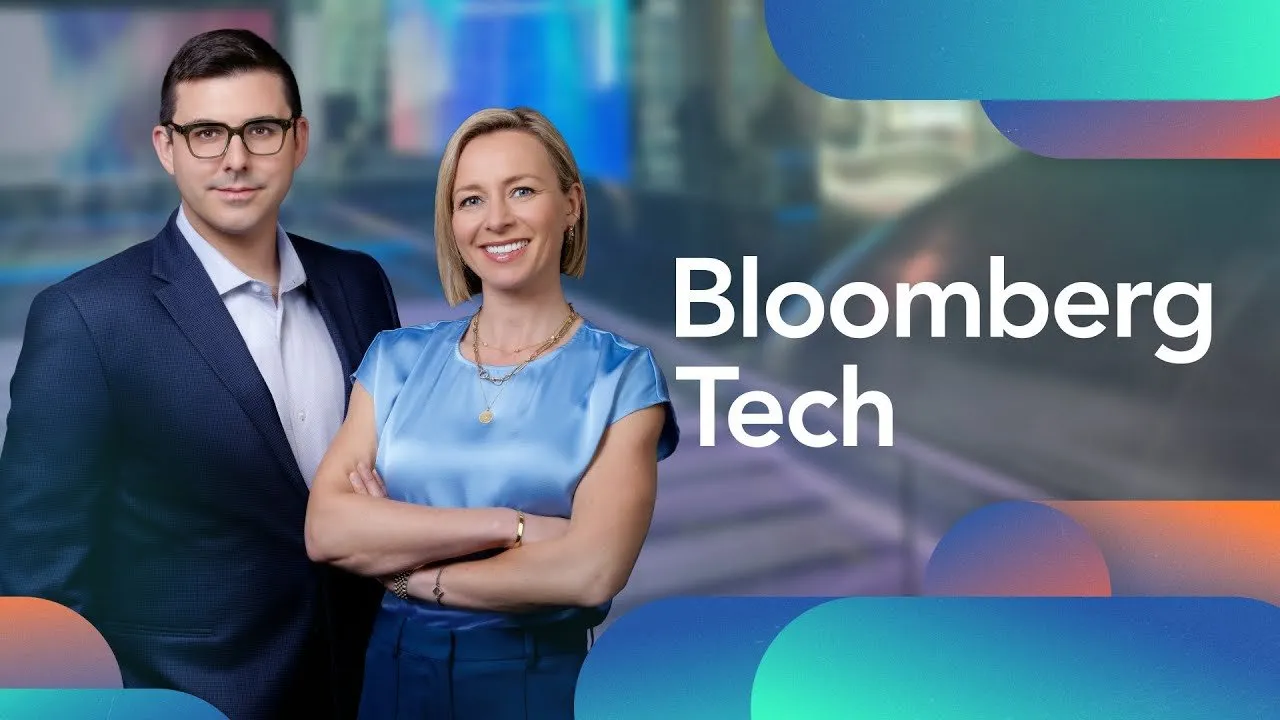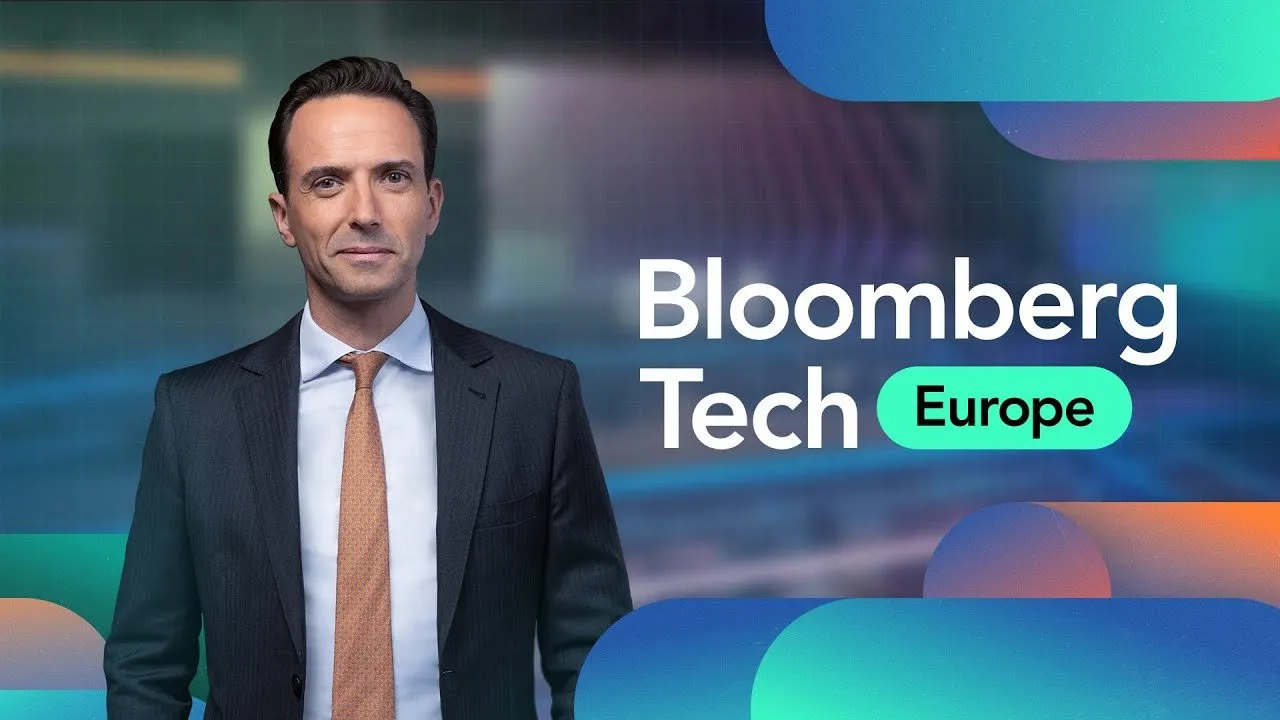Table of Contents
Lattice CEO Sarah Franklin reveals why successful leadership requires taking bold stances that might fail, how she transformed Salesforce's marketing through the Trailhead revolution, and why raising children in Mexico taught her the most important lesson about courage.
Sarah Franklin's journey from single mother counting electricity bill payments to Salesforce President/CMO to Lattice CEO demonstrates how courage to be wrong often leads to being spectacularly right.
Key Takeaways
- True leadership requires the courage to take bold positions you might have to reverse—like Indiana Jones stepping onto an invisible bridge
- The transition from money-motivated to purpose-driven work unlocked exponential career growth, leading to five promotions in rapid succession at Salesforce
- Raising children with autonomy and exposure to different socioeconomic environments builds resilience more effectively than protecting them from life's realities
- Marketing excellence requires distilling complex ideas into simple, memorable concepts that connect on human levels rather than corporate jargon
- The loneliness of CEO roles manifests in constant context-switching between difficult decisions without being able to share the burden with team members
- Truth-telling becomes the most valuable trait in leadership teams because success creates dangerous blind spots and echo chambers
- Controversial decisions like "humanizing AI" require courage to innovate publicly, then courage to pause when market reactions indicate premature timing
- Great performers can "dolphin" between 10,000-foot strategic vision and 1,000-foot tactical execution while remaining effective at all altitudes
Timeline Overview
- 00:00–01:11 — Trailer and Introduction: Setting up themes of courage, leadership evolution, and taking bold stances in uncertain territory
- 01:11–04:47 — Schooling Daughter in Mexico: Choosing bilingual education in communal Mexican town over Bay Area schools, navigating geographic distance as working mother
- 04:47–12:08 — Raising Brave Children: Daily affirmations about strength and independence, teaching resourcefulness through airport navigation, celebrating life experience over protection
- 12:08–15:40 — Sarah's Humble Upbringing: Single teacher mother, contributing babysitting income, creditor calls, electricity shutoff threats, engineering degree pursuit for financial security
- 15:40–19:10 — Money as False Solution: Realizing wealthy upbringing created different challenges, privileged children lacking perspective, Mexico providing socioeconomic diversity exposure
- 19:10–22:48 — Success Measurement Evolution: Instagram deletion eliminating FOMO, money as imperfect career progress proxy, divorce providing perspective on judgment and priorities
- 22:48–26:47 — Learnings Not Regrets Philosophy: Mother's sudden passing during daughter's college move, life's unpredictability, prioritizing presence over perfect timing
- 26:47–31:31 — Impact Over Success: Fear of being forgotten motivating continued ambition, wanting daughters proud of mother's contributions, making world better for next generation
- 31:31–38:22 — Pitching Trailhead Revolution: Jerry Maguire manifesto moment, Mark Benioff walking out initially, overnight company transformation, democratizing technology education
- 38:22–41:13 — B2B Brand Innovation: Nike Air Jordan inspiration for Trailblazer identity, empowering person over promoting company logo, beginner's mind openness
- 41:13–44:44 — Mars Colonization Interview: Replacing corporate deck with space presentation, demonstrating memorability and teaching ability, solution engineering philosophy
- 44:44–51:09 — Salesforce Marketing Excellence: Behind the Cloud principles, friendship and trust culture, vulnerability and human connection, distilling complexity into simple ideas
- 51:09–58:42 — Dolphining and Truth-Telling: Oscillating between strategic and tactical altitudes, screening for honesty over agreement, trust as collaboration foundation
- 58:42–64:53 — AWS Departure and Return: Money-motivated promotion seeking, missing Salesforce culture and purpose, rocket ship success after purpose alignment
- 64:53–69:20 — CEO Weight and Loneliness: Daily accountability feeling, team of one reality, context-switching isolation, CEO network necessity for processing
- 69:20–72:51 — Courage as Leadership Core: Indiana Jones invisible bridge metaphor, paving unknown pathways, inspiring team confidence through first-mover boldness
- 72:51–76:42 — Humanizing AI Controversy: Transparent headcount treatment for AI agents, emotional market reaction, pressing pause despite personal conviction
- 76:42–81:36 — Handling Public Backlash: LinkedIn post viral controversy, Salesforce cultural boldness, fiduciary responsibility balance, doubled-down conviction with product pause
- 81:36–END — Lattice Hiring and Grit Definition: Engineering, AI, and sales recruitment focus, defining grit as courage plus passion plus purpose combination
The Geography of Character Building: Why Mexico Matters
Sarah Franklin's decision to educate her younger daughter in Mexico reveals sophisticated thinking about character development that extends far beyond language acquisition. While her older daughter received excellent Bay Area public education, Franklin recognized something crucial was missing—perspective that only comes from socioeconomic diversity.
"She hits that social developmental important time right when COVID happened," Franklin explains about her daughter's kindergarten year. Rather than settling for isolated homeschooling, Franklin moved her daughter to a Mexican town where the entire community rallied to convert an outdoor palapa into a classroom for in-person education.
The environment provides lessons impossible to replicate in affluent American suburbs. "It's a town where there's dirt streets and various levels of socioeconomic status, and it just gives her much more perspective," Franklin observes. This exposure counteracts the privilege bubble that wealthy children often inhabit, where material abundance can breed entitlement rather than gratitude.
Franklin's daily affirmation ritual—asking "Who's strong? Who's smart? Who's brave? Who's healthy? Who can be anything they dream?"—becomes more meaningful in this context. The questions aren't theoretical when answered by a child witnessing genuine economic struggle and community resilience firsthand.
The geographic distance challenges conventional parenting wisdom but reflects Franklin's unconventional approach throughout her career. "Men aren't usually asked those questions like is it hard to be away from your child because you're working," she notes, highlighting double standards that persist in professional environments.
Most importantly, the Mexico experience teaches autonomy through necessity. Franklin makes her daughters navigate airports independently, find gates, read flight monitors—skills that privileged children often never develop. "A lot of society today, parents really protect their children and tell their children what to do, and you end up with children who follow directions but can't necessarily think for themselves."
From Survival to Purpose: The Money Motivation Trap
Franklin's relationship with money evolved through distinct phases that mirror many ambitious professionals' journeys. Growing up with a single teacher mother meant contributing babysitting income to household expenses and answering creditor calls with rehearsed responses about absent parents.
"The electricity company would call and say if you don't come down and pay the bill by midnight, the electricity is getting turned off," Franklin recalls. "My mom would say go answer the phone, tell them I'm not here." These experiences created deep association between financial security and personal worth.
The guidance counselor's advice—"if you want to make a lot of money, be an engineer"—shaped Franklin's early career trajectory entirely around income optimization. She pursued engineering degrees and technology roles specifically to escape childhood financial anxiety, believing money would solve her future children's problems.
However, achieving financial success revealed unexpected complications. "They live in a much more privileged world," Franklin observes about her daughters, noting how abundance eliminated the resourcefulness-building challenges that shaped her own character. Material comfort created different problems requiring different solutions.
The transformation came through life experience rather than financial education. Divorce proceedings, social judgment, and parental loss provided perspective that wealth couldn't purchase. "Through life experience you realize that money doesn't matter in the end—it's around who you are, what you do, how you show up, the type of person that you aspire to be."
Franklin's insight about money as progress measurement resonates particularly for ambitious professionals: "It's the feedback mechanism that you get that you're progressing. As you get more responsibility, as you take on larger roles, generally speaking the clearest metric that you have to know that you're progressing is money."
Understanding this dynamic helps explain why successful people often struggle with satisfaction despite achieving financial goals. Money serves as imperfect but convenient scorekeeping for career advancement, creating addiction to raises and promotions that may not correlate with actual fulfillment or impact.
The Trailhead Revolution: How One Email Changed Everything
Franklin's most famous career moment demonstrates the power of passionate conviction combined with strategic risk-taking. After Mark Benioff walked out of a meeting where she proposed calling Salesforce developers "Trailblazers," Franklin faced a choice between safe retreat and bold advocacy.
"That night I felt very passionate about this idea that the team had built with Trailblazer and how it was very empowering, how it was very much around giving people access to opportunity they might not have had otherwise," Franklin explains. The concept centered on democratizing technology education for people without traditional college degrees to earn six-figure salaries.
The "Jerry Maguire moment" arrived through late-night iPhone composition—the dangerous territory where passion meets professional communication. "I wrote this manifesto to Mark and I really hesitated to send it because it was quite provocative and a bit out there." The email sat unsent for ten to fifteen minutes while Franklin debated career-threatening versus career-making possibilities.
Benioff's response—"Approved. Aloha, Mark"—triggered overnight company transformation. The entire organization pivoted from "boring slides with blue clouds" to Trailblazer identity with cartoon characters Astro, Cody, and Cloudy. National parks themes permeated marketing materials, and the community-focused approach became Salesforce's defining characteristic.
The innovation's brilliance lay in psychological insight rather than technological advancement. Instead of corporate logo merchandise, Salesforce created identity-based apparel that people wanted to wear because it represented personal aspiration. "We're not going to put Salesforce across the hoodie, we're going to make it about you—the Trailblazer—and really empower you to believe you can be anything you want in your career."
The Air Jordan analogy proved prescient: "Kids thought they could put on Nike sneakers and play basketball as great as Michael Jordan—they wanted to be that type of person. That's the idea behind Trailblazer." People associated their success with Salesforce technology because the platform enabled their transformation rather than simply providing tools.
Franklin's success stemmed from recognizing B2B marketing's human psychology fundamentals. While consumer brands like Nike and Apple mastered identity-based marketing, enterprise software typically emphasized features and functionality. Trailhead proved that business users respond emotionally to brands that understand their aspirations and challenges.
The Mars Colonization Gambit: Memorability Over Convention
Franklin's interview technique for a solution engineering role reveals systematic thinking about differentiation and value demonstration. Faced with standard corporate presentation materials, she made a calculated decision to present on Mars colonization instead—a choice that could have ended her candidacy immediately.
"I figured you're going to be sitting here listening to the same presentation over and over again. You're going to be bored off your rocker, you're not going to learn anything, and you're not going to remember me if I just give the same presentation," Franklin explained to the CEO after her unconventional presentation.
The justification demonstrated sophisticated understanding of sales psychology across three dimensions. First, teaching ability: "You want me to sell your software and talk to customers and communicate the value of our technology—here's what you need to know: I can show up with customers and teach them something. You just learned something."
Second, relationship building: "You want to understand if I can build a relationship and have a good conversation and earn the trust of a customer—I can do that." The Mars presentation proved communication skills while creating memorable shared experience.
Third, lasting impression: "You are going to remember me and your customers will remember me and they will want to do business with me because they're going to learn from me and they trust me and they remember that." Memorability became competitive advantage in crowded solution engineering market.
The CEO's immediate hiring decision validated Franklin's risk calculation, but the broader principle applies across professional contexts. Conformity ensures safety but eliminates differentiation. Bold choices create memorable experiences that compound over time through word-of-mouth and reputation building.
Franklin's approach required confidence in fundamental capabilities combined with strategic presentation innovation. She couldn't have succeeded without underlying competence, but competence alone wouldn't have distinguished her from other qualified candidates. The Mars presentation demonstrated creativity, communication skills, and strategic thinking simultaneously.
The Salesforce Marketing Machine: Culture as Competitive Advantage
Franklin's analysis of Salesforce's marketing excellence reveals organizational culture as the foundation for individual success. The consistent quality of alumni across multiple companies—from Sarah Van Es at Okta to Scott Holden in various roles—suggests systematic development rather than coincidental talent clustering.
"Mark himself is a brilliant marketeer and all of us were raised and schooled in his ways and teaching for marketing," Franklin explains. The foundation came from Benioff's book "Behind the Cloud," which Franklin describes as masterclass material covering fundamental principles: "The event is the message, your website's your number one salesperson, always be selling."
However, tactical knowledge alone doesn't explain the extraordinary outcomes. Franklin identifies deeper cultural elements that created sustainable advantage: "There's a great tree of friendship and a tree of trust. We had fun together, we held each other to very high standards, we worked super hard and brought our A-game all the time."
The psychological environment enabled risk-taking and innovation that more conservative cultures couldn't replicate. When Franklin proposed revolutionary changes like distributed launch events or controversial positioning against competitors, the team supported bold experimentation because failure wasn't career-ending.
Franklin emphasizes vulnerability and authenticity as core elements: "A certain vulnerability of not taking yourself too seriously, really wanting to connect on a human level. Not just mumbo jumbo jargon words put together on a page that perform well for SEO—it's really getting down to human speak."
The "No Software" campaign exemplifies this philosophy. Rather than technical feature comparisons, Salesforce created emotionally resonant positioning that distilled complex software-as-a-service benefits into two memorable words. Benioff would walk around conferences with "No Software" signs, creating visceral contrast with traditional enterprise vendors.
Franklin's insight about word choice precision reflects sophisticated marketing craft: "Putting three words on a slide is one of the hardest things to do because you have to choose. Fast is different than speedy is different than agile—they're different words. You have to choose very specifically what words you're going to use to communicate something complicated in a very simple way."
The Dolphin Test: Altitude Flexibility as Leadership Requirement
Franklin adopts the interviewer's "dolphin" metaphor for describing essential executive capability—the ability to gracefully oscillate between strategic vision and tactical execution. Like dolphins emerging from water at 10,000 feet, cresting at 5,000 feet, then diving deep to 1,000 feet, great leaders maintain effectiveness across all operational altitudes.
"People have to be willing to do the work, they have to be deep in the details, but then have the strategic view," Franklin explains. This capability becomes more critical as organizations scale and complexity increases. Leaders who can only operate at one altitude create bottlenecks and misalignment.
Franklin's example from Salesforce marketing illustrates the principle in practice. Building Trailhead required simultaneous engagement with high-level community strategy, mid-level product positioning, and detailed execution across events, content, and technology platforms. Success demanded fluid transitions between these contexts without losing effectiveness at any level.
The dolphin metaphor also explains why certain executives struggle during company growth phases. Individual contributors who excel at tactical depth often fail when promoted to strategic roles because they can't operate effectively at higher altitudes. Conversely, strategic thinkers without tactical grounding lose credibility and effectiveness with operational teams.
Franklin adds truth-telling as her primary screening criterion: "I need people that tell the truth. Too many people will tell you what you want to hear or what they think they're supposed to say versus what they really think to be true." This becomes more critical as success creates dangerous echo chambers around leaders.
The combination—altitude flexibility plus radical honesty—creates powerful leadership teams. Dolphin executives can engage authentically across organizational levels while truth-tellers provide essential feedback loops that prevent strategic drift and operational blindness.
Franklin's insight about trust as collaboration foundation connects to both capabilities: "In any relationship to be effective, if you don't trust the person you're collaborating with, you're not going to do your best work. You're not going to fully explore ideas. You're going to be more on your guard." Dolphin capabilities build trust through demonstrated competence, while truth-telling maintains trust through consistent honesty.
The Purpose Pivot: When Success Finds You
Franklin's career trajectory illustrates the compound effect of purpose alignment on professional advancement. Her initial money-motivated phase at Salesforce yielded steady but unremarkable progress. The transformation came after her brief AWS departure when she returned with fundamentally different motivation.
"When I came back to Salesforce, my purpose changed from make money to help people do incredible things with our technology," Franklin explains. "That's when success really found me because then I went from director to senior director to vice president to senior vice president to executive vice president to president CMO."
The promotion sequence—five levels in rapid succession—demonstrates how purpose alignment accelerates career growth in ways that pure ambition cannot. Franklin's daily mindset shifted from personal advancement to community impact, creating authentic passion that resonated throughout the organization.
"I showed up every day to work to say how can we be helpful, what difference can we make," Franklin recalls. This orientation attracted opportunities and resources because her success aligned with broader organizational goals rather than competing with them.
The Trailblazer community provided tangible evidence of impact that sustained motivation through difficult periods. Franklin can name specific individuals whose lives transformed through Salesforce education: Cheryl Feldman transitioning from hairdresser to technologist, Zach Otero moving from factory worker selling plasma to feed his family to technology professional taking family vacations.
"Aaron McGriff, security guard laid off, learned Salesforce, able to buy his home, create generational wealth for his family," Franklin continues. These personal relationships created emotional investment that made work feel meaningful rather than merely profitable.
The pattern suggests that sustainable high performance requires alignment between personal values and professional activities. When work serves purposes beyond individual advancement—whether community impact, family legacy, or societal improvement—effort becomes self-reinforcing rather than depleting.
Franklin's insight challenges conventional career advice that emphasizes strategic networking and skill development over purpose discovery. While those elements matter, her experience suggests that finding work worth caring deeply about may be more important than optimizing tactical advancement strategies.
CEO Loneliness: The Team of One Reality
Franklin's description of CEO isolation reveals structural challenges that preparation cannot fully address. Despite warnings from mentors like Mike Rosenbaum about loneliness, the reality proved more complex than anticipated.
"You are a team of one because you have your board and they're a team together, and then there's you and you have to manage them, and then you have your team and they're a team together," Franklin explains. "You're really a team of one."
The loneliness manifests during context-switching between difficult decisions where sharing information could create team dynamics problems. "It manifests when you're context-switching between maybe a difficult conversation or a difficult decision, and then you have to go to a next conversation where you can't share because that person is part of their team and they're not part of your team."
This isolation differs from social loneliness—Franklin feels supported by her team and board. Instead, it's informational and emotional isolation around decision-making responsibility. CEOs process complex, interconnected challenges without being able to fully share the cognitive and emotional burden.
Franklin's collaborative leadership style amplifies the challenge: "I'm the person that seeks input, I brainstorm out loud, I want voices, I want to hear perspectives because if I only have my own myopic perspective, I will not be able to have good challenges to my ideas."
The CEO network becomes essential infrastructure rather than luxury networking. "You need to be able to talk about things cross-functionally about your team, about your business, about what's going on in ways that don't freak anybody out, don't cause any politics, don't leave you in a state that's not good with your board."
Franklin's insight about courage as essential CEO characteristic connects to this isolation: "It's like the Indiana Jones movie where there's an invisible bridge and you throw sand on it and you can see it, but you really have to have the courage to take that step out over the abyss of the unknown."
The AI Humanization Controversy: Courage to Be Wrong
Franklin's "humanizing AI" initiative demonstrates the courage required for innovation leadership, particularly the willingness to take public positions that might require reversal. The concept emerged from practical need to manage AI agents entering organizations with same rigor applied to human employees.
"AI is more than a chatbot—it is a reasoning entity that's going to be having conversations with our customers and employees. It's going to be more of a colleague that you're working together with than a tool programmed with definitive rules," Franklin explained the original premise.
The proposal applied standard HR workflows to AI: confidentiality agreements, conduct codes, system access controls, and exit procedures. "We have processes for managing people when we bring them into an organization. Apply the same workflows to AI as it's entering and exiting your company."
Market reaction proved swift and emotional. "Feedback was that you're humanizing AI, which was irony because that's the opposite of what the intention was. It was more to clearly identify AI so that we knew where it was." The misunderstanding highlighted communication challenges around emerging technology concepts.
Franklin's response required balancing personal conviction with organizational responsibility: "You have to have the courage to say okay, there's more questions right now than we have answers to, so we're going to press pause." This decision demonstrated leadership maturity—knowing when to persist versus when to recalibrate timing.
The controversy's aftermath proved instructive rather than damaging. "Fast forward, people are like well where is that because I have a lot of AI in my organization and I'd really like to manage it." Market readiness evolved toward Franklin's original vision as AI adoption accelerated.
Franklin's reflection reveals sophisticated thinking about innovation timing: "My stance hasn't changed, but I'm not forcing the innovation and the product. The conversation is started." Sometimes leadership requires planting seeds for future harvest rather than demanding immediate acceptance.
Common Questions
Q: How do you balance ambition with parenting responsibilities across geographic distance?
A: Technology enables constant connection through FaceTime, while autonomy-building experiences prepare children for real-world challenges better than protective environments. The goal is raising strong, independent children rather than dependent ones.
Q: What's the difference between money-motivated and purpose-driven career phases?
A: Money motivation creates steady but limited progress, while purpose alignment attracts exponential opportunities because personal success aligns with organizational goals rather than competing with them.
Q: How do you screen for truth-telling in leadership teams?
A: Look for people willing to share uncomfortable realities rather than saying what they think you want to hear. Success creates dangerous blind spots, so honest feedback becomes essential for effective decision-making.
Q: What makes Salesforce marketing teams consistently excellent across different companies?
A: Combination of Mark Benioff's strategic principles from "Behind the Cloud," culture emphasizing friendship and trust, vulnerability in human connection, and willingness to take bold creative risks.
Q: How does CEO loneliness differ from other forms of isolation?
A: It's informational and emotional isolation around decision-making responsibility—being unable to fully share cognitive burden of complex, interconnected challenges that affect team dynamics.
Conclusion
Franklin's journey from single mother managing creditor calls to Fortune 500 executive demonstrates how courage to take bold positions—even when they might be wrong—often leads to extraordinary outcomes. Her leadership philosophy centers on authentic purpose pursuit, truth-seeking, and the willingness to step onto invisible bridges when innovation requires it.
Practical Implications
- Screen for "dolphin" capability in executives—the ability to oscillate effectively between strategic vision and tactical execution across different organizational altitudes
- Prioritize truth-telling over agreement in leadership teams, as success creates dangerous echo chambers that require honest feedback loops
- Align personal purpose with professional activities to unlock exponential career growth rather than relying solely on tactical advancement strategies
- Build CEO peer networks for processing complex decisions that cannot be shared within organizational hierarchy due to team dynamics concerns
- Develop courage to take public positions on innovation that might require reversal when market timing proves premature
- Focus on creating memorable experiences that demonstrate competence rather than conforming to conventional presentation formats

